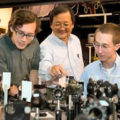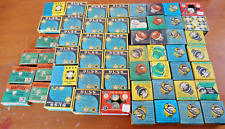
Massachusetts Institute of Technology (MIT) researchers have genetically engineered viruses to build both the positively and negatively charged ends of a lithium-ion battery. The new virus-produced batteries have the same energy capacity and power performance as the state-of-the-art rechargeable batteries being considered to power plug-in hybrid cars.
MIT’s Angela Belcher, who led the research team, said the new batteries could be manufactured using a cheap and environmentally benign process: The synthesis takes place at and below room temperature and requires no harmful organic solvents, and the materials that go into the battery are non-toxic. The viruses used are a common bacteriophage, which infect bacteria but are harmless to humans.
In a traditional lithium-ion battery, lithium ions flow between a negatively charged anode, usually graphite, and the positively charged cathode, usually cobalt oxide or lithium iron phosphate. Three years ago, an MIT team led by Belcher reported that it had engineered viruses that could build an anode by coating themselves with cobalt oxide and gold and self-assembling to form a nanowire.
In the latest work, reported in Science, the team focused on building a highly powerful cathode to pair up with the anode. Cathodes are more difficult to build than anodes because they must be highly conducting, however, most candidate materials for cathodes are highly insulating.
The team found that incorporating carbon nanotubes increases the cathode’s conductivity without adding too much weight to the battery. In lab tests, batteries with the new cathode material could be charged and discharged at least 100 times without losing any capacitance. That is fewer charge cycles than currently available lithium-ion batteries, but “we expect them to be able to go much longer,” Belcher explained.
The researchers now intend to pursue even better batteries using materials with higher voltage and capacitance, such as manganese phosphate and nickel phosphate.
Related:
“Spin battery” provides novel electrical storage
Wireless Power Transfer Revisited


















Comments are closed.